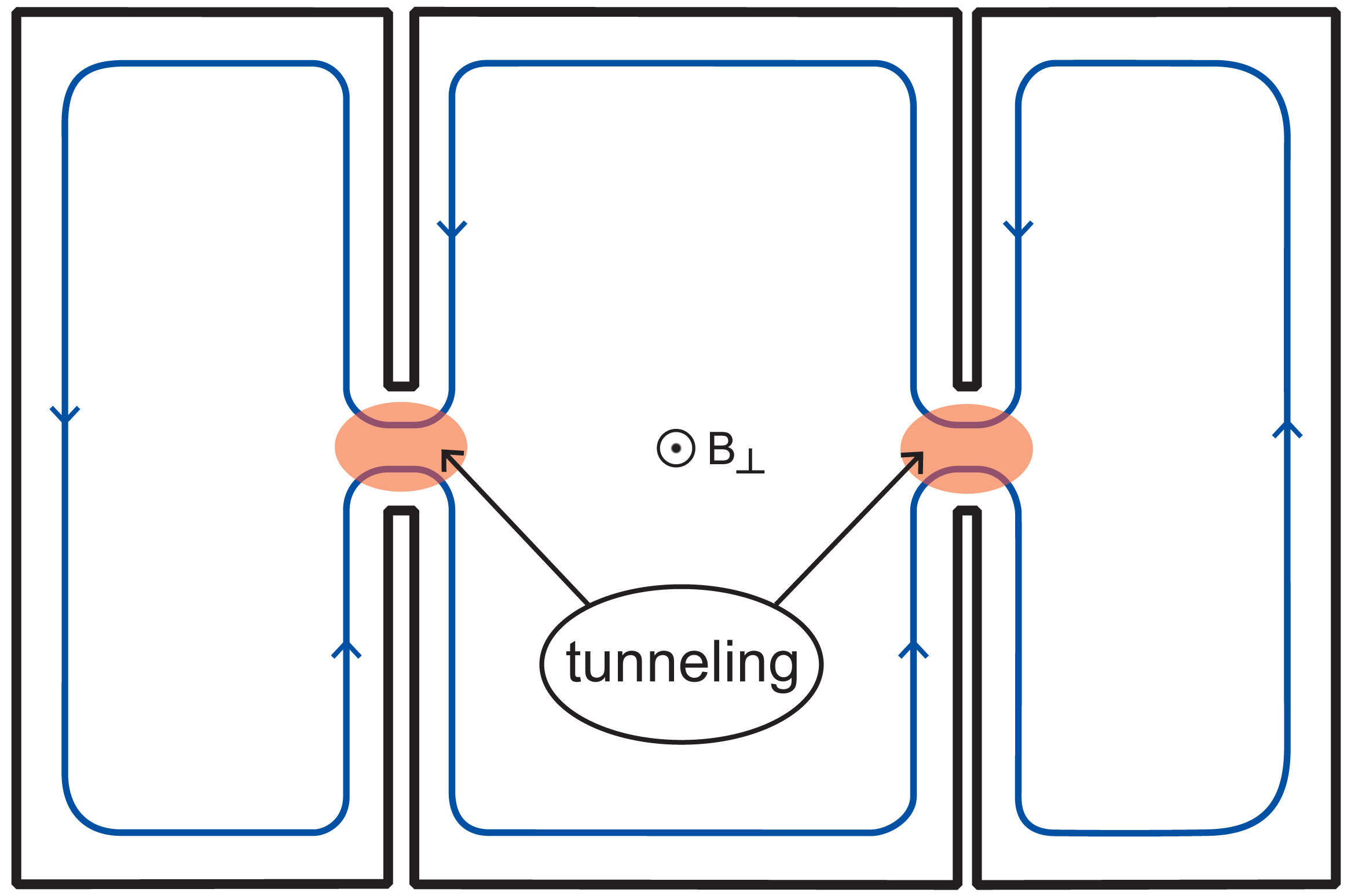| Kastner Group | Home | People | Research Projects | Papers and Publications | Lab Tour | Posters |
|
|
Tunneling and Interference of Quasiparticles in the Fractional Quantum Hall RegimeWe are studying the Fractional Quantum Hall Effect (FQHE) in GaAs/AlGaAs heterostructures. When a magnetic field is applied perpendicular to the two-dimensional electron system (2DES) at the heterostructure interface the electrons organize into Landau levels, the occupancy of which is given by the filling factor. The Integer Quantum Hall Effect (IQHE) occurs at integer filling factors. At fractional filling factors the elementary excitations of the system are not electrons but rather quasiparticles and quasiholes with fractional charge. In the IQHE, electrons are carried by one-dimensional edge channels, one per Landau level, which are located near the boundary of the 2DES. The channels circle the 2DES in a direction determined by the magnetic field. Similarly, in the FQHE regime, quasiparticles are also carried by edge channels.
 Edge channel in a 2DES, showing regions of tunneling. We pattern metallic gates on the surface of our samples and by applying sufficient voltage to these gates we can effectively change the boundary of the 2DES region. Thus, we are able to bring edge states with opposite chirality near enough to each other for quasiparticles to tunnel between them. By making transport measurements in the weak tunneling regime we are able to extract the fractional charge of the quasiparticles and other important parameters of the system. We also plan to make quasiparticle interferometers by creating two spatially separated regions of tunneling. Interference experiments are especially important at filling factor 5/2, as they can be used to determine if the quasiparticles exhibit abelian or non-abelian particle statistics (Stern and Halperin). Ordinarily, particles follow boson or fermion statistics, both of which are abelian. In these cases, exchanging two identical particles produces a phase factor of 1 or -1 in the wavefunction. Conversely, exchanging identical particles with non-abelian statistics would result in a change to the wavefunction which is more than just a phase factor. If the 5/2 ground state is found to be non-abelian (as predicted by certain theoretical proposals) it would be the first such state to be experimentally observed. |
| Home
| People
| Research Projects
| Papers and
Publications
| Lab
Tour
| Posters
|
||